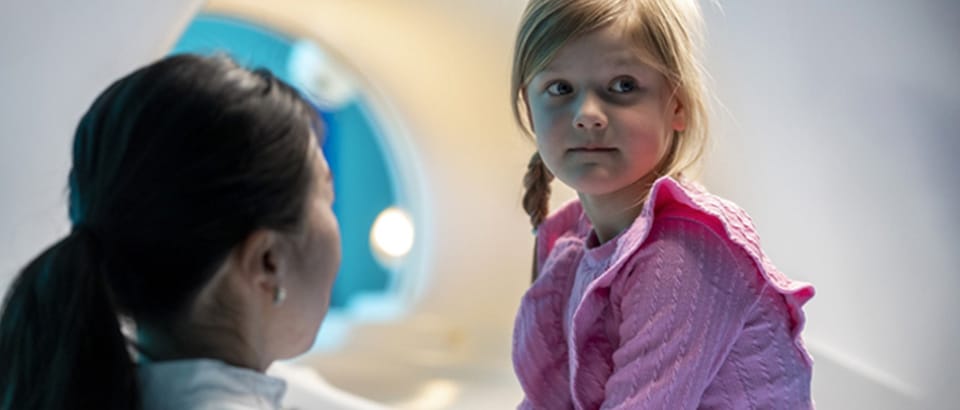What good design does: reassuring an 8-year-old getting an MRI exam
Imagine you are 8 years old. Next week you are getting an MRI exam. Lying in your bed at night, you think about the hospital, that white ring, and being inside it. Lying still. Hearing loud noises. This is what designers do. They imagine what it is like being a patient preparing for an exam. They ask: what would this patient, let’s call her Sophie, really want? To finish the MRI exam and say, ‘it wasn’t scary at all!’.

Designing for impact
This is the impact that design makes. It is not just about the shape, color or look-and-feel of a product. Designers constantly observe how medical equipment is being used in practice and talk to end users to find out their needs and how their lives can be improved.
In the case of Sophie, this is by reassuring her that she will do fine.
• She can prepare for the exam using the interactive Pediatric Coaching app, so she can get used to the MRI scanner and the noise it makes, learn about the procedure, and build confidence.
• Right before the exam, the technologist lets Sophie experience the soft matrass and the light weight and flexible coils, to make her feel as comfortable as possible.
• Ambient Experience creates a light and sound atmosphere that makes Sophie feel at ease.
• From the moment she goes into the MRI (the point at which people report the most stress) through the conclusion of the examination, she hardly even realizes she is in one; the in-bore experience makes it feel like she is a completely different and relaxing environment. An immersive video experience distracts and entertains Sophie, while comfortable headphones allow her to receive breath hold cues and a personalized progress bar indicating duration.
• This is better for Sophie and delivers better results: feeling calm often means better being able to lie still. This can increase the image quality of the MRI scan and reduce the risk of needing a second exam. Did you know that, to complete an MRI, 45% of children need sedation or anesthesia*? For children 3-5, this goes up to 76%.**
• Thanks to the AI-enabled SmartSpeed, the MR exam only takes 10 minutes instead of 30.
In the video series ‘What good design does’, we explore the impact that design makes, by working backwards from the needs of patients, healthcare professionals and people at home. This is the first episode of the series, stay tuned for more.
Design is all about making sure we truly understand end user needs, and then work backward from them. So our innovations can impact the lives of thousands of kids. And they have one thing less to worry about.
* Stunden C, et al (2021).
** Wachtel RE, et al. (2009).
- Toggle view
Related pages
Related pages

